Choose La Pampa
La Pampa has historically been one of the Provinces from Argentina with the best performance as regards fiscal policies, and particularly, as regards management of public debt.
In that sense, considering the financial results in the year 2021, La Pampa ranks 2nd in the list of Provinces with the best fiscal performance per person, and it is in the 3 rd position among the provinces with less debt stock per person, according to the last available data provided by the Ministry of Economy of Argentina.
This neat fiscal performance has been a government policy in our Province that has lasted for more than 30 years within the democratic system, and it has enabled to cater for both the needs of the people from La Pampa and the productive system even during the worst economic crises that Argentina has undergone, with an efficient and successful management of resources.
Fig. 1: Stock of Provinces’ debt per person up to December 31, 2021 (stated in Argentine pesos)
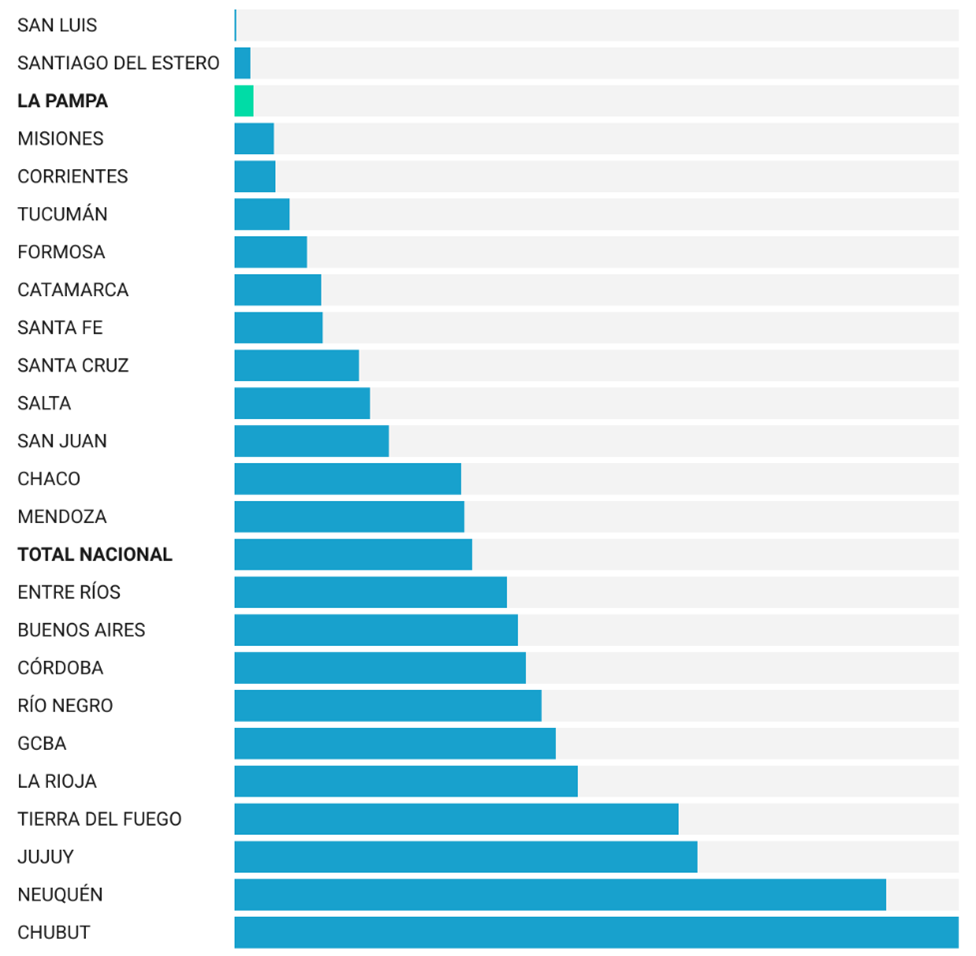
Source: Ministry of Economy of Argentina (National Department of Provincial Affairs)
Historically, the Province of La Pampa has mantained this satisfactory performance of fiscal accounts as its stock of public debt per person has always been in the lowest positions among the 24 Provinces of the Argentine Republic.
Fig. 2: Ranking of debt stock per person. The position of the Province of La Pampa.
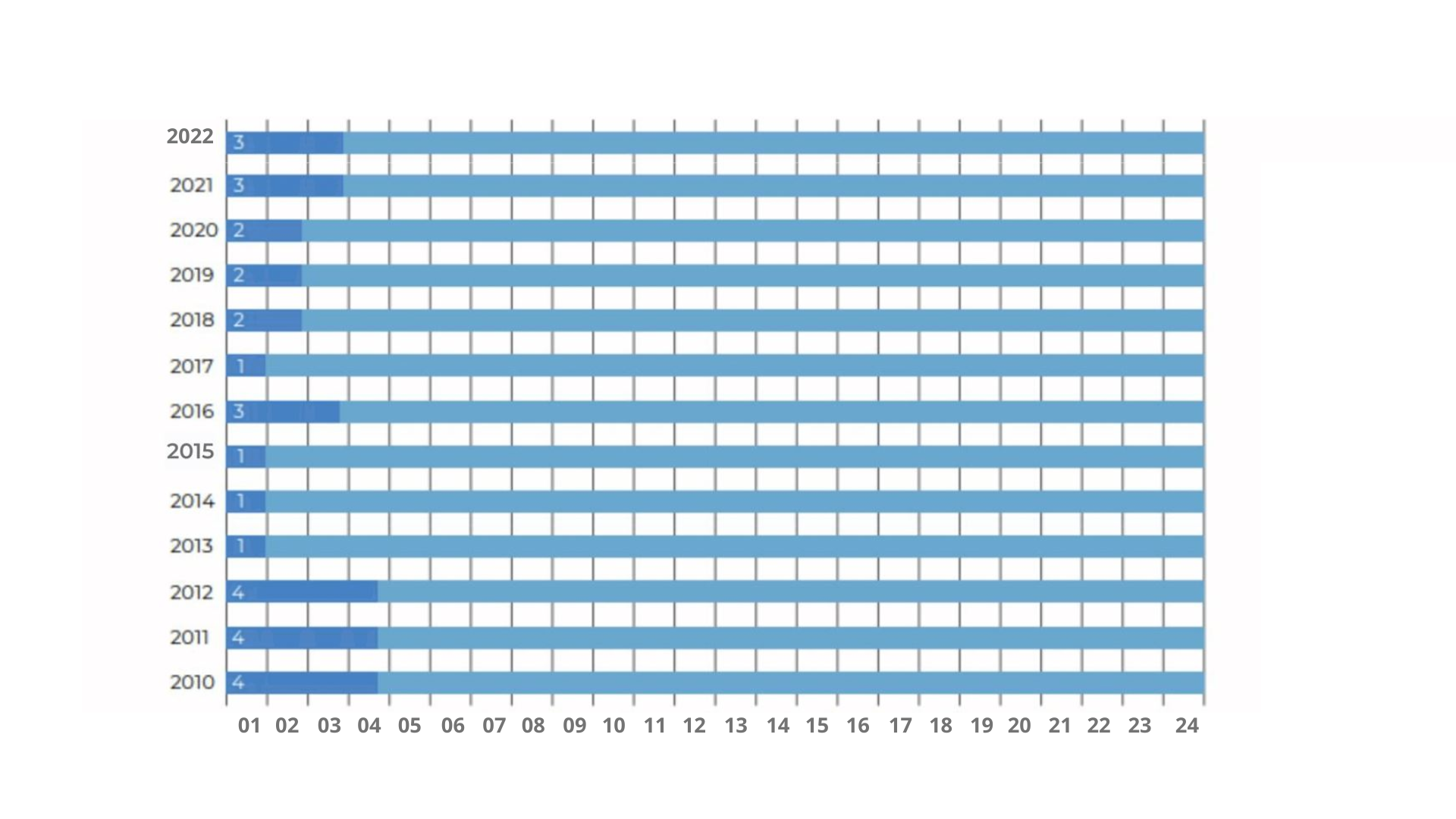
Source: Ministry of Economy of Argentina (National Department of Provincial Affairs).
The Province of La Pampa has attractive legal, tax, employment, and financial structures, and the Government offers a wide range of credit to all the productive private sectors and to those sectors that provide services to help production, with interest rates that have a subsidy of up to 30% and up to seven-year terms.
Among the benefits offered in the Province, there are tax incentives such as the reduction of up to 30% in the rates of the Gross Income Tax, and the reduction or exemption of the other local taxes, with the aim of decreasing tax burden (there is a zero rate for certain sectors).
In order to ensure that small, very small and medium enterprises will have access to credit, there is a Pampean Guaranty Fund (“FOGAPAM” in Spanish), which allows them not only to have a guarantor to get credit in the bank financial system but also to obtain, for the first time, funding in the capital market and to develop new financial tools to stimulate their investment.
There is also an employment subsidy, thanks to which the Government grants monthly subsidies to companies for each employee that they hire. This benefit will last for 15 months, and the amount given will be updated every three months according to the salary index provided by the National Institute of Statistics and Censuses of the Argentine Republic (INDEC in Spanish).
The Province of La Pampa also has a Tax-free Zone and more than 20 Industrial Parks. The Tax-free Zone in the city of General Pico has special regulations in terms of taxes, customs, exchange rates, foreign trade, and capital investment, and offers multiple benefits for those companies that are willing to settle here.
All the advantages that the Province of La Pampa offers, at different levels, make it attractive to all branches of industry, from the more traditional agribusiness to energy and textile industries, and from software and e-commerce to knowledge-based companies.
- Registered Private Employment:
The tertiary sector is the sector with the greatest weight within the structure of registered private employment in the province of La Pampa.
During the year 2022, 62% of the average registered private employment in the province of La Pampa was represented by the tertiary sector, with the most dynamic activities being wholesale and retail trade, real estate services, business and rental services, and transportation, storage, and communication services.
Figure 1: Composition of registered private employment by sector and relevant activities. Average year 2022.
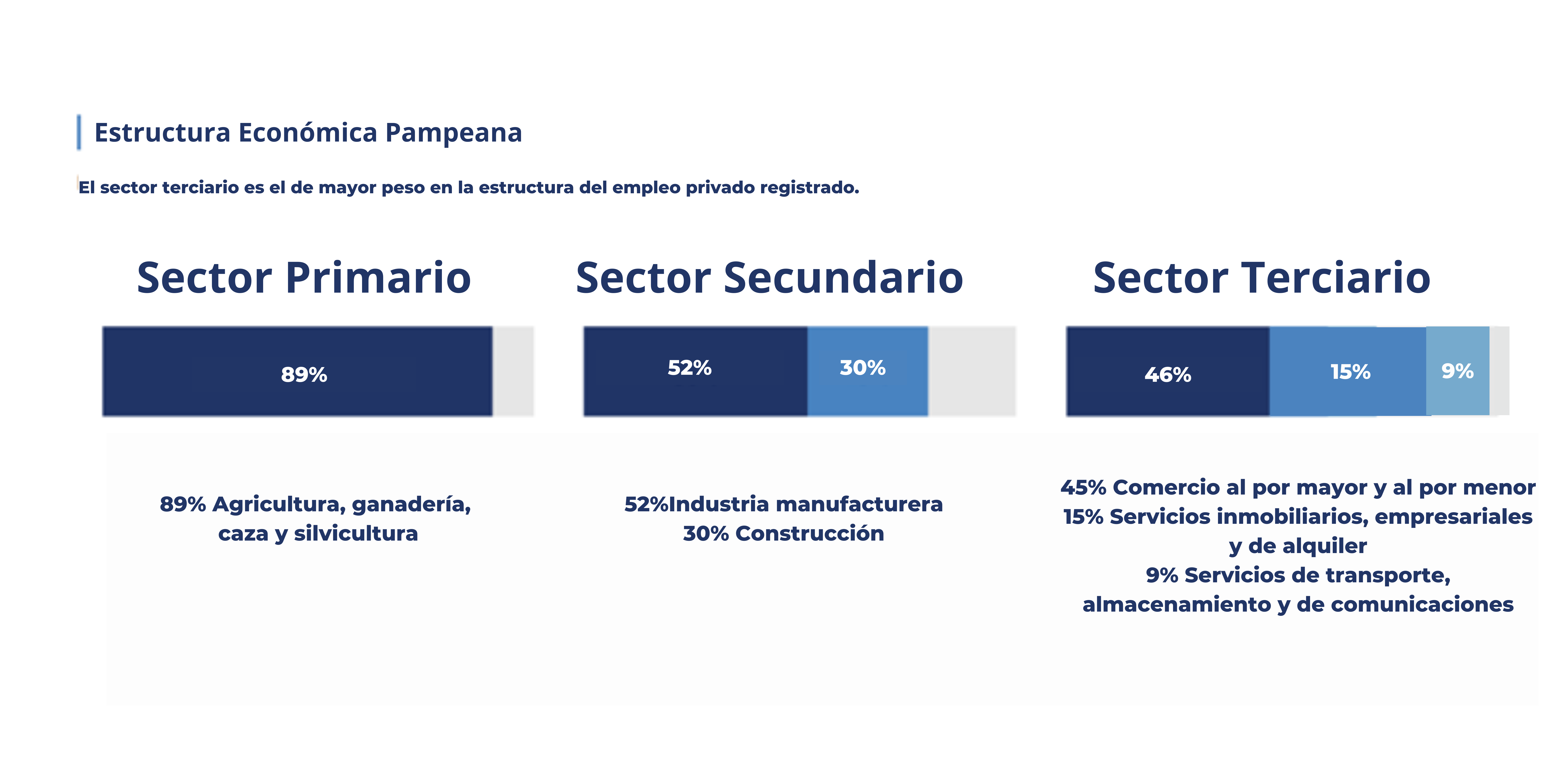
Source: our own study based on data from the Ministry of Labor, Employment and Social Security.
- Income above national average
Due to the regional context of the Province, La Pampa’s family income per person is higher than Argentina’s average income.
Fig. 1: National family income per person. Average 2022
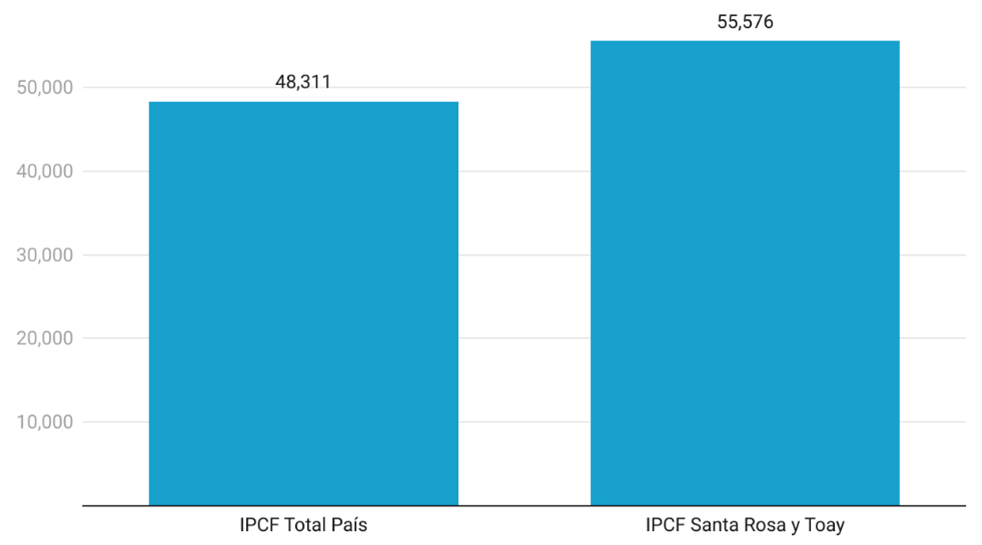
Source: National Institute of Statistics and Censuses of the Argentine Republic (INDEC). Permanent Household Survey (EPH)
- Human Development Index
In 2021 (when the last data per province was provided) La Pampa was placed in the second position in the ranking of Human Development Index (HDI) per province, with 0.86 points, 0.02 points below the City of Buenos Aires (which was in the first position) and 0.003 points above the Province of Chubut. With respect to the year 2016, the Province of La Pampa climbed 3 positions in the 2021 ranking, as it increased its HDI in 0.011 points.
Fig. 1: Human Development Index per province (2021)
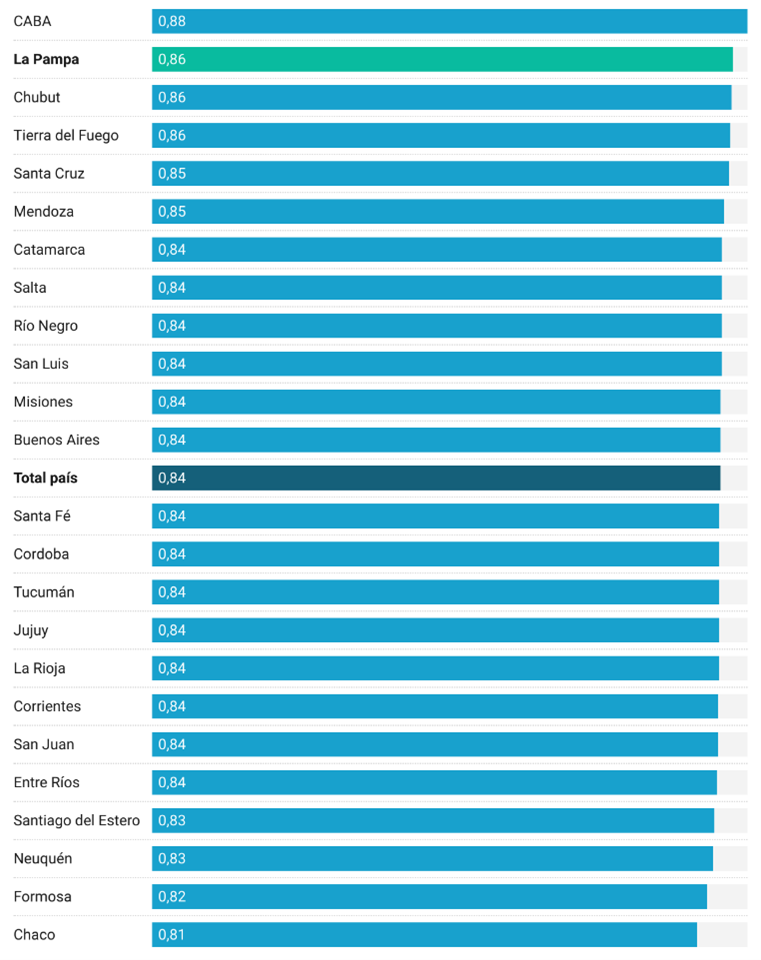
Source: United Nations Development Programme
![]()
The Province of La Pampa is located in the center of Argentina, in the middle of different geographical regions of the country, such as the Pampean Hills, the Pampean Plains, Cuyo and Patagonia. La Pampa shares some characteristics with each of these regions, but it belongs to Patagonia due to its institutions, politics and society.
La Pampa has a strategic position in relation to the rest of the provinces and the large ports that connect Argentina with the American Continent and the world. This privileged location lets La Pampa be easily and permanently linked with the most important markets and centers of consumption.
Population
- 366.022 hab(1)
- 2,55 hab/km2
Source: National Population, Households and Homes Census 2022. Preliminary
results. January 2023

Most of the south-west area of La Pampa is the entrance to the region of Patagonia, whereas a smaller area in the north-east belongs to the Pampean region..
In the south of the Province there are some low hills which are not higher than 589 meters. In the north-west, there are a few isolated hills which reach an altitude of 1,188 meters above sea level. In the east of the Province we find an area of valleys, with dunes, salt flats and lagoons.
The territory of the Province of La Pampa has quite different environmental regions: an area of steppe (grassland), in the north-east, which is nowadays covered with crops; a thorny area (caldén forest) that goes diagonally from the north-west to the south-east; and an area of shrubs (jarilla) in the west, which covers 50% of the total area of the province.
Most of the territory of La Pampa has mild weather, although there is considerable temperature variation that goes from a sub-humid climate in the east to an arid one in the west. This variation predetermines both the population settlement and the productive development.
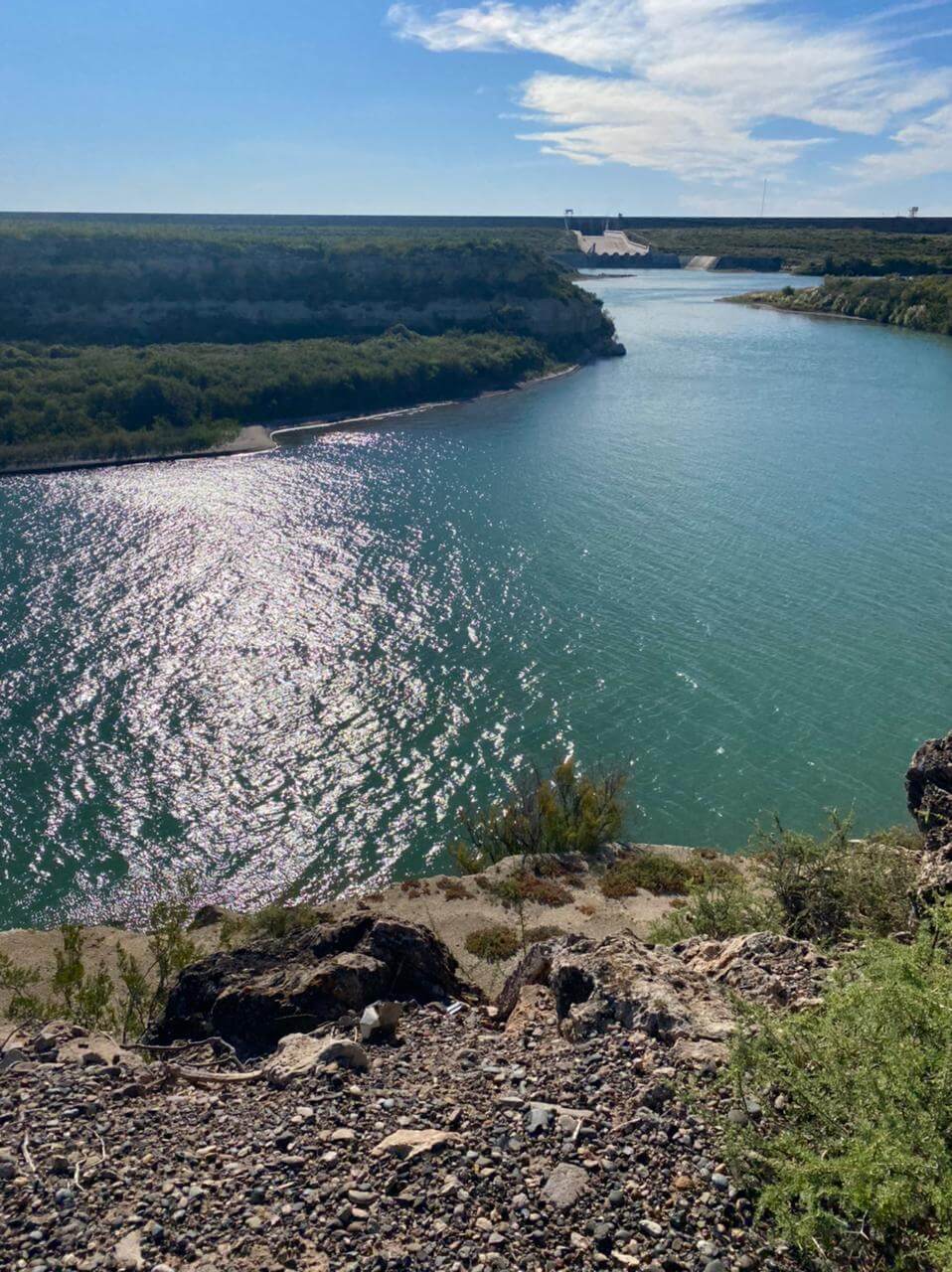 Surface waters represent a really important part of the water resources, and they are even
more valuable in our Province, as most of its territory is within a semi-arid region.
Surface waters represent a really important part of the water resources, and they are even
more valuable in our Province, as most of its territory is within a semi-arid region.
Two rivers that originally ran through La Pampa, Atuel and Salado, have lost their natural hydrological behavior as the highland provinces where these rivers rise have used their water excessively or have even cut their waters off. All this has led to a severe environmental damage that has seriously affected the Province of La Pampa.
The Colorado River establishes the southern border of the Province and has an enormous
potential for development. On La Pampa’s side, the river runs next to the towns of
Gobernador Duval and La Adela until it flows into Mar Argentino. After the town Colonia 25
de Mayo, there is a water reservoir in Casa de Piedra with a dam that manages the Colorado
River, controlling when it rises annually, and allowing the irrigation of nearby lands, the
generation of electric power, and new activities such as fish farming, tourism and recreation.
It is expected that the area under irrigation may expand up to 85 thousand hectares, which
may, in turn, enrich the region and increase its population. The valley of the Colorado River is
one of the only ones in the world with mild weather that still remains unexploited, which may
enable a large production of food.
In addition, the Province of La Pampa has other water reserves that are considered strategic, such as Valle Argentino, Meauco, Toay-Santa Rosa-Anguil-Catrilo, Valle de Chapalco, La Puma – Trilí, General Pico – Dorila – Speluzzi, and other ground waters that are public property of the province and represent strategic resources to ensure water management.


